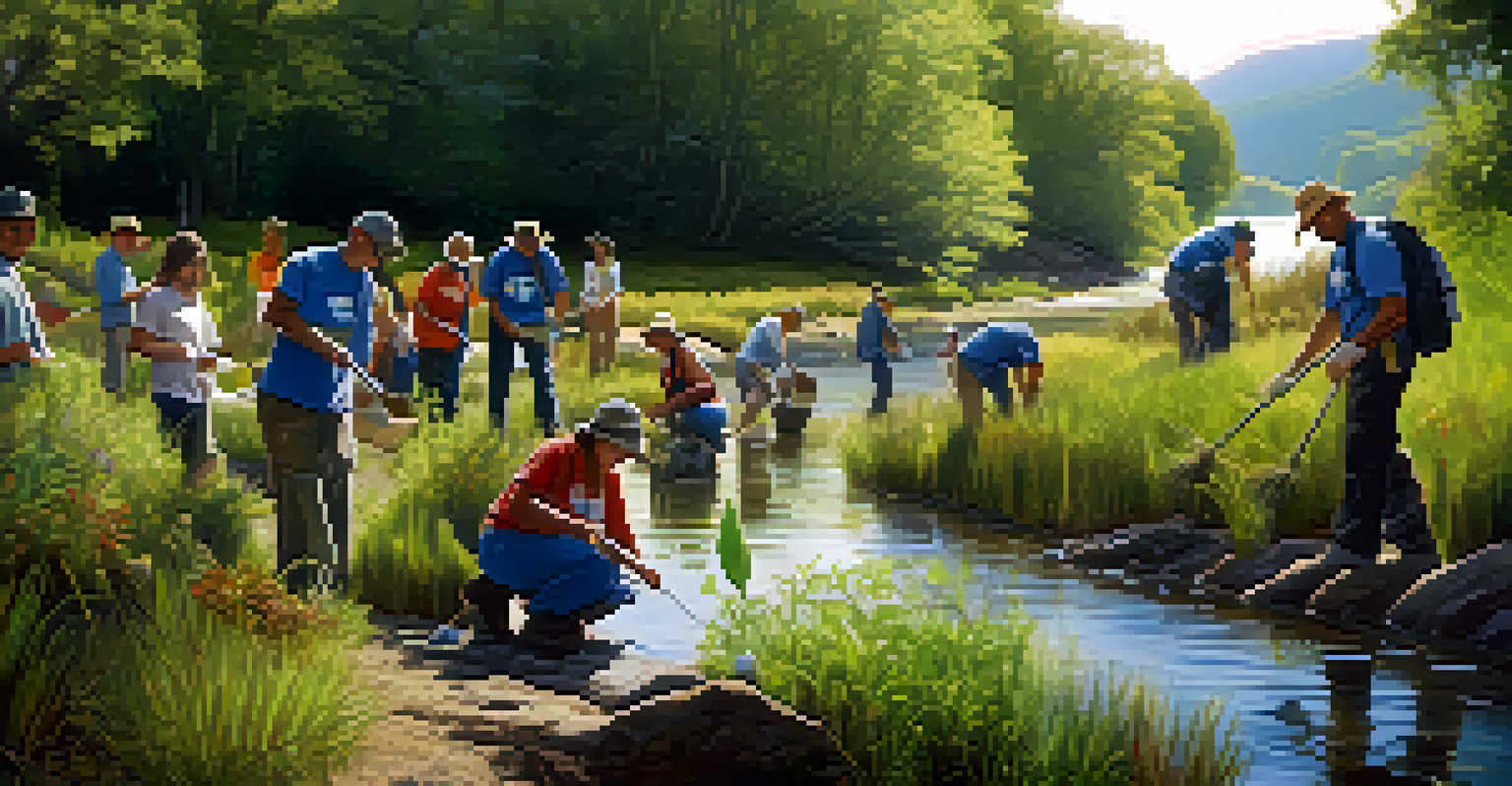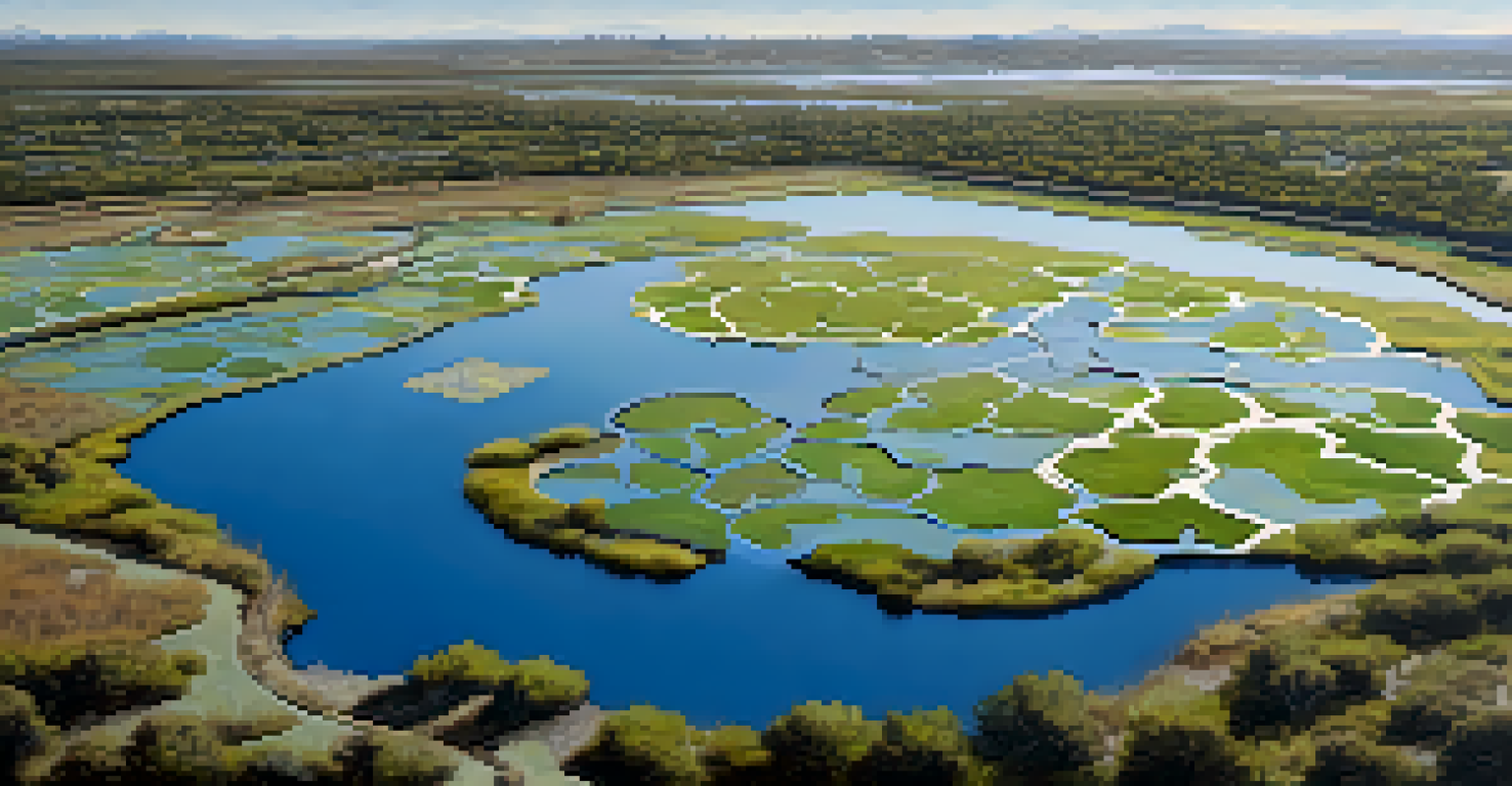Preserving California's Endangered Species: Key Strategies

Understanding the Importance of Biodiversity in California
California is renowned for its stunning biodiversity, housing more species than any other state in the U.S. This ecological richness provides vital services, such as clean air and water, which are essential for human survival. Loss of biodiversity can disrupt these services, leading to a negative impact on both ecosystems and communities.
In every walk with nature one receives far more than he seeks.
Moreover, many of California's species are endemic, meaning they exist nowhere else on Earth. Protecting these unique species isn't just about preserving nature; it's about safeguarding a part of our global heritage. When we lose a species, we lose a piece of who we are and how we connect with the world around us.
In recognizing the value of biodiversity, we can motivate collective action towards conservation efforts. This understanding serves as a foundation for strategies aimed at preserving the endangered species that call California home.
Identifying Endangered Species and Their Habitats
The first step in conservation is identifying which species are endangered and understanding their habitats. California is home to numerous endangered species, including the California condor and the desert tortoise. Each of these species has specific habitat requirements that must be met for their survival.

Scientists and conservationists utilize a variety of tools, such as field studies and satellite imaging, to track populations and assess habitat conditions. This data is crucial for developing targeted conservation strategies that address the specific needs of each species. By focusing on habitat preservation, we can create a safer environment for these vulnerable populations.
Biodiversity is Essential in CA
California's rich biodiversity provides vital ecosystem services and houses many unique species that are crucial to our global heritage.
Understanding the relationships between species and their habitats allows us to prioritize conservation efforts effectively. When we know where these species thrive, we can work to protect those areas from threats like urban development and pollution.
Legislation and Policies Supporting Conservation
Legislation plays a vital role in the conservation of endangered species. The Endangered Species Act (ESA) provides a framework for protecting threatened and endangered species and their habitats in the U.S. This law has successfully helped various species recover, serving as a model for conservation efforts nationwide.
What we are doing to the forests of the world is but a mirror reflection of what we are doing to ourselves and to one another.
California has also implemented its own policies, such as the California Endangered Species Act (CESA), which lays out specific protections for local wildlife. These policies not only help conserve species but also promote ecological balance by safeguarding entire ecosystems. By supporting and enforcing these laws, we can ensure that endangered species receive the protection they need.
Effective legislation requires collaboration between government agencies, environmental groups, and the public. By advocating for strong policies and holding institutions accountable, we can enhance efforts to protect California's endangered species.
Community Involvement in Conservation Efforts
Community involvement is crucial in the fight to save endangered species. Local residents can participate in conservation initiatives, such as habitat restoration projects or wildlife monitoring programs. Engaging the community not only boosts awareness but also fosters a sense of ownership and responsibility toward local wildlife.
Organizations often host workshops and events to educate the public about the importance of biodiversity and how they can contribute to conservation. For instance, citizen science projects allow individuals to collect data on local species, which can be invaluable for researchers. This hands-on approach empowers people to become active participants in the conservation process.
Community Involvement Drives Change
Local communities play a key role in conservation efforts by participating in habitat restoration and advocating for protective policies.
Additionally, local communities can advocate for policies that protect their natural surroundings. By raising their voices and working together, they can influence decision-makers and drive change to support endangered species in their regions.
Habitat Restoration: Reviving Ecosystems for Wildlife
Habitat restoration is a critical strategy for conserving endangered species. Many species face extinction due to habitat loss caused by urban development, agriculture, and climate change. Restoring these habitats can help reestablish ecosystems where endangered species can thrive once again.
Efforts may include planting native vegetation, removing invasive species, and rehabilitating degraded landscapes. For example, restoring wetlands not only benefits aquatic species but also improves water quality and provides flood control. These projects often require collaboration between various stakeholders, including government agencies, non-profits, and local communities.
Successful habitat restoration projects can lead to notable increases in animal populations. By creating a supportive environment, we can help endangered species rebound and secure their place in California's diverse ecosystems.
Education and Awareness Campaigns for Conservation
Education and awareness are powerful tools for conservation. By informing the public about the plight of endangered species, we can inspire action and support for conservation initiatives. Schools, organizations, and community groups play a vital role in spreading knowledge about the importance of protecting biodiversity.
Awareness campaigns can take many forms, including social media outreach, workshops, and informational materials. These initiatives help demystify complex conservation issues and make them relatable to everyday life. When people understand how their actions impact local wildlife, they are more likely to make environmentally conscious choices.
Technology Enhances Conservation Efforts
Innovative tools like GPS tracking and drones improve our understanding of wildlife, allowing for more effective conservation strategies.
Furthermore, engaging storytelling can be an effective way to connect individuals with conservation efforts. Sharing success stories about species recovery can motivate others to join the cause, demonstrating that collective action can lead to meaningful change.
The Role of Technology in Wildlife Conservation
Technology plays an increasingly important role in conserving endangered species. Innovations like GPS tracking, drones, and camera traps provide valuable insights into wildlife behavior and habitat use. These tools help researchers monitor populations and make informed decisions about conservation strategies.
For example, drone technology allows for aerial surveys of hard-to-reach areas, enabling scientists to gather data without disturbing wildlife. This efficiency can significantly enhance research efforts and lead to more effective conservation measures. Additionally, mobile apps and online platforms can facilitate community involvement by allowing citizens to report sightings or contribute to data collection.

By harnessing technology, we can streamline conservation efforts and maximize the impact of our initiatives. As we continue to develop new tools, the future of wildlife conservation looks promising.